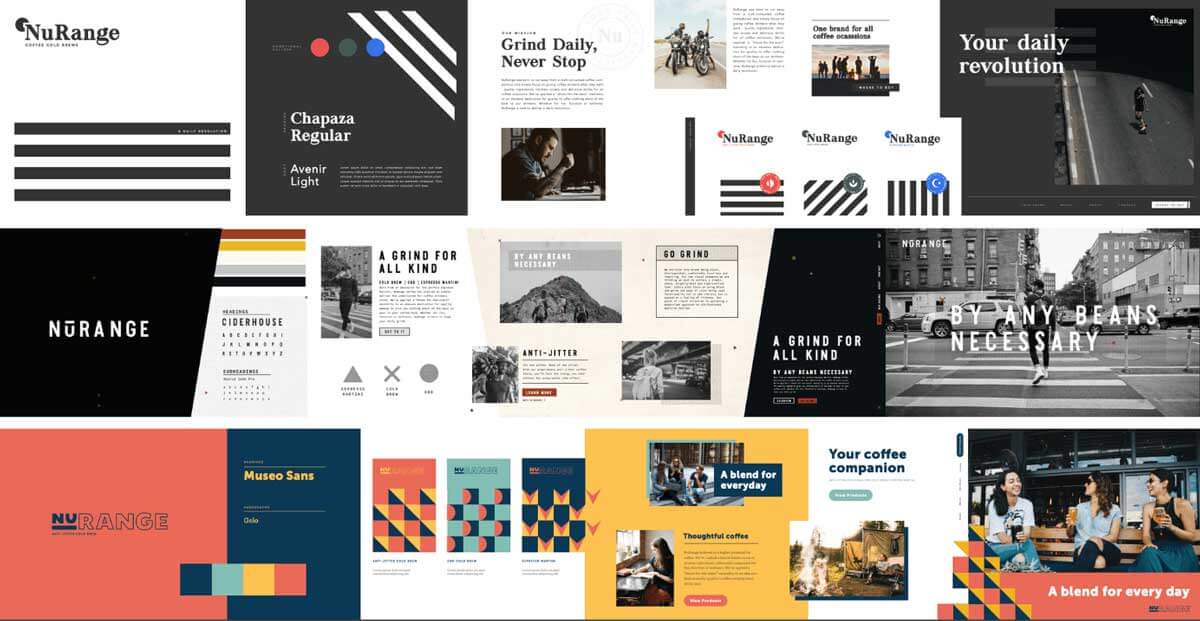What are Stylescapes
As both a full service branding agency, we use a number of tools to execute work on behalf of clients and to help those clients understand our design decisions. Stylescapes are one of those tools.
A stylescape is an opportunity to demonstrate to the client how a brand will look and feel. It’s a collection of brand assets – colors, typography, images, language tone, design elements etc. – combined together to provide an overall visual aesthetic of a brand. In short, stylescapes show how the brand would look and feel as it would be executed across anything the brand touches, but without carrying those decisions through to collateral.

In the branding design process, stylescapes fall before final mockups and after the brand strategy. As the visual output created once key research ingredients have been gathered, their purpose is to tell an artful brand story. This information is collected through discovery meetings wherein we learn all we can about our client’s business. By gaining this understanding of what our clients do, why they do it, and who they do it for, we are able to align brand messaging with key information such as attributes, taglines, and slogans.
Delivering concrete mockups too early can risk overwhelming, under-educating, and jeopardizing the strategy behind the design process. Stylescapes help to fully engage the client into the brand design process before developing more concrete mockups of the identity, by providing the ability to present unbiased directions to the client for their buy-in and collaboration. These stylescapes allow us to freely present the overall identity approaches without the expectations of say, a collateral design or web mockup.

The core process of stylescapes can vary from project to project, however it always relies heavily on researching and crafting the messaging strategy to drive a purposeful approach to designing the identity. Our team usually starts by designing the logo and the mark. Then, they combine these with the brand attributes to design the stylescape. These items, along with other sources of inspiration and aesthetic vision, are also incorporated into the final stylescape design. For example, if a key attribute is ‘premium’, a quality feel will be relayed throughout each of these items to create a stylescape that portrays this keyword.
Collaboration, both within the agency team and with the client, is key for success of the stylescape process. Typically, three different directions are presented to the client and their opinions, likes, and dislikes are weighed heavily to choose specific components from each direction. This feedback is then worked into a revised stylescape presentation that more closely represents how the finished brand will look and feel. Once approved, mockups are designed using the final stylescapes as a guide which demonstrates how the brand will live and breathe when it’s applied through consumer touch points.

An important point to make, a stylescape is not a moodboard. Moodboards are generally used for inspiration only, whereas stylescapes are a series of deliberate design decisions which support the brief, research, keywords and goals of the client.
The goal of a stylescape is to elicit an emotional response to the brand look and feel. By using stylescapes to elicit this response, it is then possible to create mockups which carry those feelings and design decisions through to the design of all assets. However, building a brand doesn’t stop with the creation of assets. Branding is the essence of who you are as a brand, but all brands require marketing to build awareness for your brand, products and services. With assets in place you can begin the steps of crafting and relaying a brand that has the promise of a unique, lasting experience for your customers.
First published on 2/20/2019 – updated on 05/15/2023
